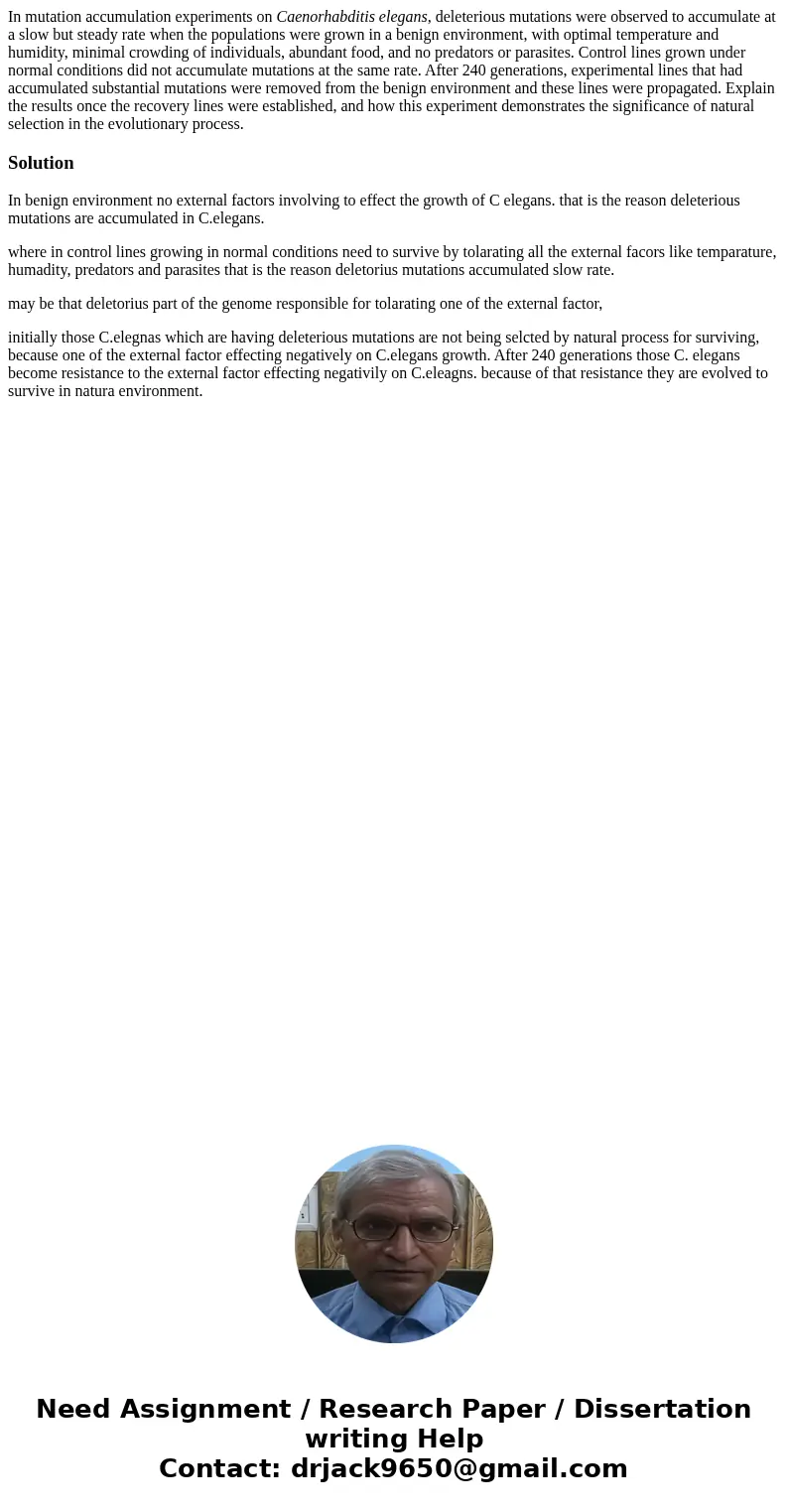In mutation accumulation experiments on Caenorhabditis elega
In mutation accumulation experiments on Caenorhabditis elegans, deleterious mutations were observed to accumulate at a slow but steady rate when the populations were grown in a benign environment, with optimal temperature and humidity, minimal crowding of individuals, abundant food, and no predators or parasites. Control lines grown under normal conditions did not accumulate mutations at the same rate. After 240 generations, experimental lines that had accumulated substantial mutations were removed from the benign environment and these lines were propagated. Explain the results once the recovery lines were established, and how this experiment demonstrates the significance of natural selection in the evolutionary process.
Solution
In benign environment no external factors involving to effect the growth of C elegans. that is the reason deleterious mutations are accumulated in C.elegans.
where in control lines growing in normal conditions need to survive by tolarating all the external facors like temparature, humadity, predators and parasites that is the reason deletorius mutations accumulated slow rate.
may be that deletorius part of the genome responsible for tolarating one of the external factor,
initially those C.elegnas which are having deleterious mutations are not being selcted by natural process for surviving, because one of the external factor effecting negatively on C.elegans growth. After 240 generations those C. elegans become resistance to the external factor effecting negativily on C.eleagns. because of that resistance they are evolved to survive in natura environment.

 Homework Sourse
Homework Sourse